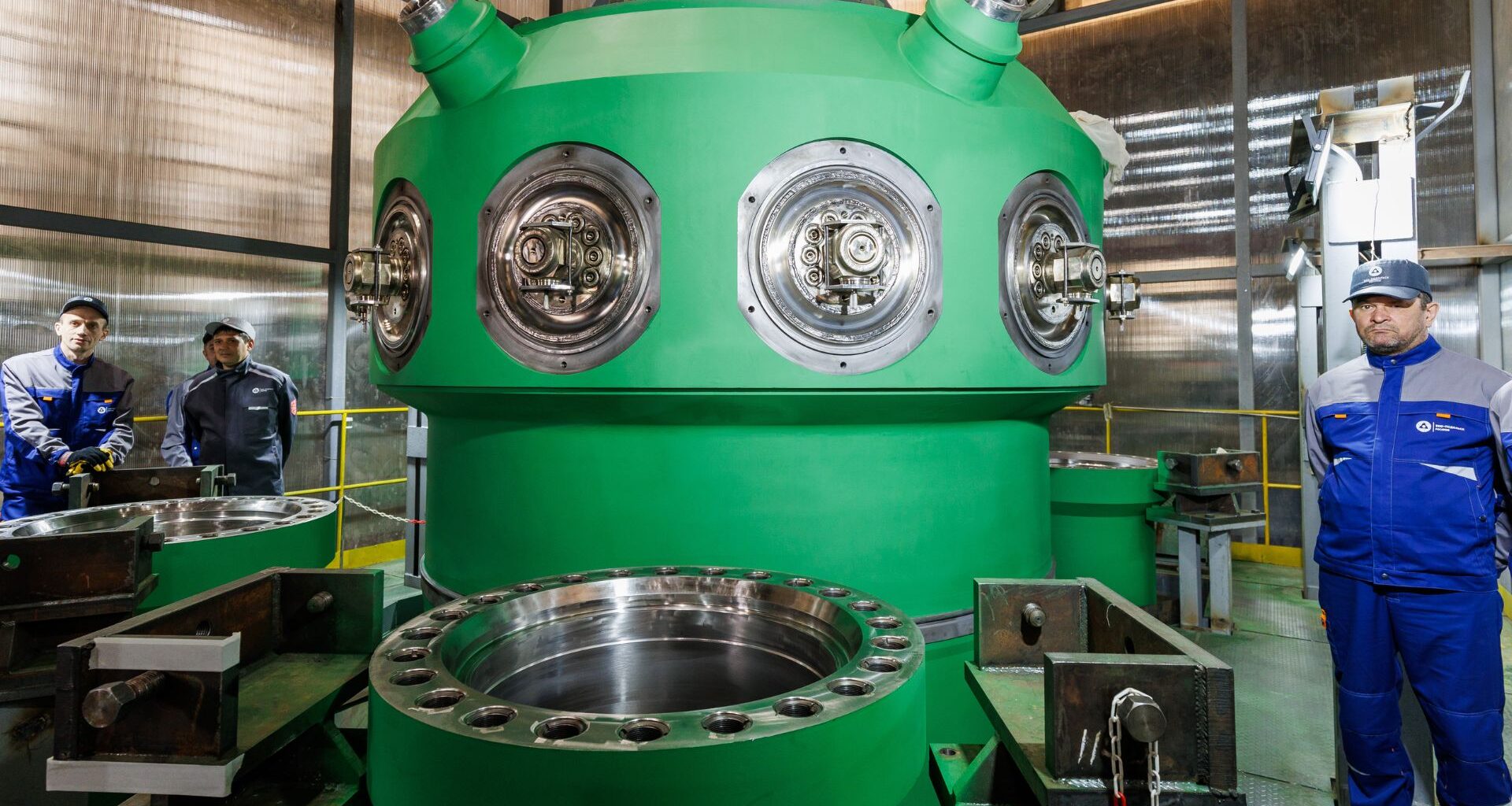Russia has unveiled the first ‘RITM-400’ nuclear reactor to power the under-construction ‘Rossiya’ nuclear icebreaker. The advanced reactor, manufactured by ZiO-Podolsk, a subsidiary of Rosatom’s Machine-Building Division, will make ‘Rossiya’ the most powerful vessel of its kind.
The ‘RITM-400’ reactor, a scaled-up version of the successful RITM-200 design, produces 315 MWt and 120 MW of propeller power. Its completion signals a major leap forward for Russia’s nuclear icebreaker fleet.
Alexey Likhachev, chief of Russia’s Nuclear agency Rosatom, emphasized the reactor’s importance during the unveiling ceremony.
“The completion of the RITM-400 reactor is a significant event for the icebreaker fleet, for Rosatom and for our entire country,” said Likhachev.
He further revealed that the twin reactors for the ‘Rossiya’ will be named after legendary Russian heroes, Ilya Muromets and Dobrynya Nikitich.
“We decided to name each of the two reactors, which will make the ship extraordinary powerful, after the Russian legendary heroes, Ilya Muromets and Dobrynya Nikitich. They performed feats in the name of Russia, while the new reactors named after them will help Rossiya icebreaker overcome the special ice conditions of the Arctic,” noted Likhachev in a press release.
Making ‘Rossiya’ most powerful icebreaker
Igor Kotov, Head of Rosatom’s Machine Building Division, confirmed that the second RITM-400 unit is expected to be completed within a couple of months.
“Both units will be sent to the shipyard for installation on the Rossiya nuclear ship and will be a gift from Rosatom’s machine builders to mark the 80th anniversary of the nuclear industry,” Kotov added in a press release.
“The completion of this project opens up new opportunities in developing the Northern Sea Route.”
Once operational, the ‘Rossiya’ will become the world’s most powerful nuclear icebreaker. As the inaugural vessel of the proposed Project 10510, it will feature two RITM-400 pressurized water reactors, enabling it to penetrate ice up to 14 feet (4.3 meters) thick and clear a channel up to 164 feet (50 meters) wide. The vessel’s target service date is 2030.
Strategic importance of nuclear icebreakers
Russia’s push for more nuclear icebreakers is a clear strategic move to enhance shipping along its northern coast. Nuclear icebreakers, despite their high operational costs, offer significant advantages over their diesel-powered counterparts.
Their onboard reactors can operate for several years without refueling, which is crucial for sustained operations in the remote Arctic where diesel fuel is scarce and unsuitable for extreme weather. Diesel-powered vessels also lack the immense power required for heavy icebreaking and have limited range and endurance.
Currently, Russia is actively constructing the nuclear icebreaker ships ‘Chukotka’, ‘Leningrad’, and ‘Rossiya’, with plans for another vessel, ‘Stalingrad’, under project 22220.
Russia has indicated that a few more universal nuclear icebreakers are needed to ensure consistent operations along the 3,479 mile (5600-kilometre) Northern Sea Route, which extends from St Petersburg and Kaliningrad to Vladivostock.
This route significantly reduces shipping distances, with Russia claiming it halves the journey from Murmansk to Japanese ports compared to the Suez Canal, cutting transit time from approximately 37 to 18 days.
